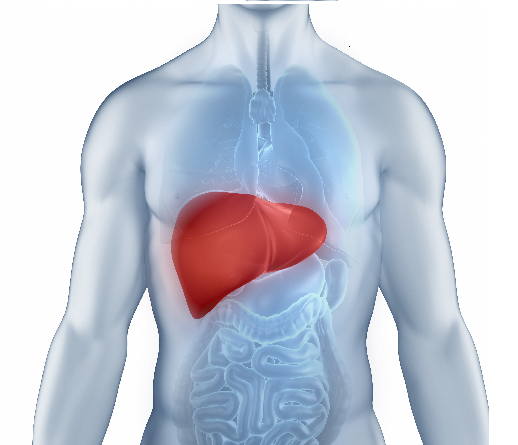Jaundice: Symptoms, Causes & Diagnosis

Jaundice, often characterised by yellowing of the skin and eyes, is a condition that can occur in individuals of all ages, from newborns to older adults. It results from underlying medical conditions affecting the liver, gallbladder, or bile ducts.
Understanding the symptoms of jaundice, its causes, and management options is crucial for proper management and timely intervention.
What is Jaundice?
Jaundice or “hyperbilirubinemia” is the yellowing of the skin, the whites of the eyes, and the mucous membrane due to the high buildup of bilirubin in the blood. But what is bilirubin? Bilirubin is a yellow pigment created when hemoglobin is broken down.
Jaundice can occur in individuals of all ages but is most common among newborn babies and older adults.
What are the Types of Jaundice?
There are different types of jaundice depending on where it occurs during the liver’s process of taking and filtering out bilirubin from the blood.
- Pre-hepatic jaundice: This occurs when the blood’s rate of breaking down the red blood cells increases bilirubin in the blood. This happens before the blood reaches the liver.
- Hepatic jaundice: Hepatic jaundice occurs when the liver tissue cannot effectively filter bilirubin from the blood.
- Post-hepatic jaundice: It happens when the filtered-out bilirubin cannot pass through the bile duct or digestive tract effectively enough to be passed out of the body. Post-hepatic jaundice can occur due to blockage after bilirubin is filtered in the liver.
What Causes Jaundice?
Jaundice is caused by high bilirubin buildup in the blood.
So, what causes high bilirubin? When the red blood cells die, they create bilirubin, a yellow pigment in the blood. Typically, bilirubin is delivered through the bloodstream into the liver, where it passes through the bile duct and the small intestine and is eventually eliminated from the body through stool. However, if the bilirubin is unable to pass through the liver and bile ducts quickly, it can lead to bilirubin buildup in the blood. This is hyperbilirubinemia and results in yellow skin and eyes.
As a result, Jaundice is typically caused by an underlying condition that either leads to excessive production of bilirubin or prevents the liver from filtering it. These include-
- Side effects of certain medications
- Malaria
- Gallbladder or pancreatic cancer
- Gallstone disease
- Hepatitis or other liver function
- Cirrhosis, a condition that causes scar tissues to replace healthy liver tissues
- Hemolytic anemia
What are the Symptoms of Jaundice?
Recognising the symptoms of jaundice is the first step toward diagnosis and treatment. While yellowing of the skin and eyes is the most noticeable sign, other symptoms may include:
- Abdominal pain
- Fever
- Abnormal weight loss
- Dark urine
- Itchy skin
- Chills or cold sweats
- Feeling tired or confused
- Bruising or bleeding easily
- Pale stool
- Fatigue
How is Jaundice Diagnosed?
To diagnose infant jaundice, doctors typically check for symptoms every 8-12 hours within the first 48 hours after birth and before 5 days old. Testing options include using a light meter on the baby’s head to determine the transcutaneous bilirubin level or conducting a blood test.
For adults, healthcare professionals typically start with a physical examination and patient history. A doctor will order lab tests to evaluate the liver function and measure bilirubin. These include-
- Blood tests: Various blood tests, such as complete blood count (CBC) test, enzyme test, hepatitis test, or liver function test to measure bilirubin levels.
- Imaging tests: An MRI or ultrasound to examine the liver, bile ducts, and gallbladder.
- Urinalysis: To measure the amount of specific substances in the urine.
- HIDA scan: To help detect blockage in the liver, gallbladder, small intestines, or bile duct.
How to Manage Jaundice?
Jaundice typically resolves on its own. For breastfed babies, jaundice can usually last about a month, and for infants, it can resolve for up to two weeks.
In adults, doctors will treat the underlying condition causing it. For instance, if the person has a block in the bile duct, healthcare professionals may suggest surgery. Or if jaundice is caused due to viral hepatitis, it will resolve on its own as the liver heals.
Recognising the symptoms of jaundice, understanding its causes, and seeking timely medical intervention is crucial for proper management and treatment.
FAQs
1. What is the main cause of jaundice?
Jaundice is usually a symptom of an underlying condition of the liver, gallbladder, or bile duct, which prevents the organs from filtering bilirubin. This can lead to excess bilirubin in the bloodstream and cause jaundice.
2. How to reduce jaundice symptoms?
To reduce symptoms of jaundice, it is important to stay hydrated, eat a nutritious diet rich in fruits, vegetables, and fiber foods, and consume protein. Other lifestyle changes, such as ensuring a healthy weight and avoiding smoking, can even help prevent jaundice.













